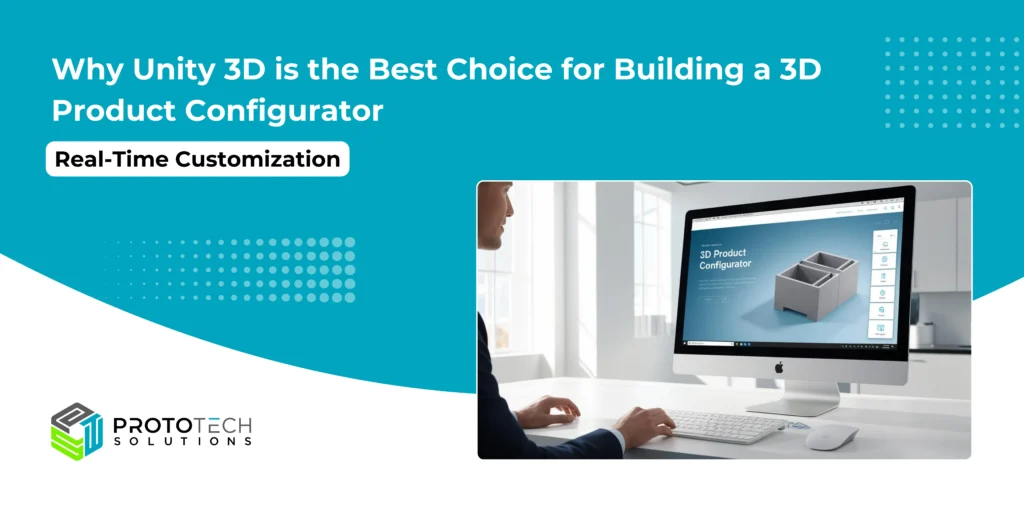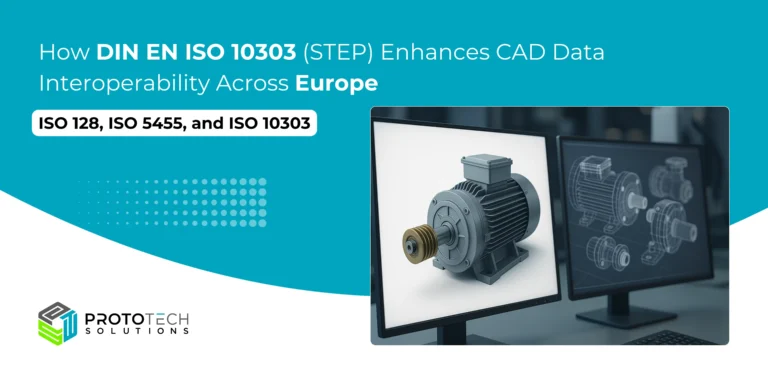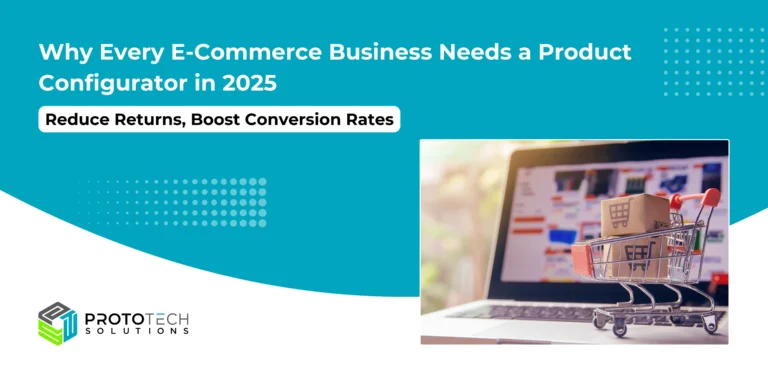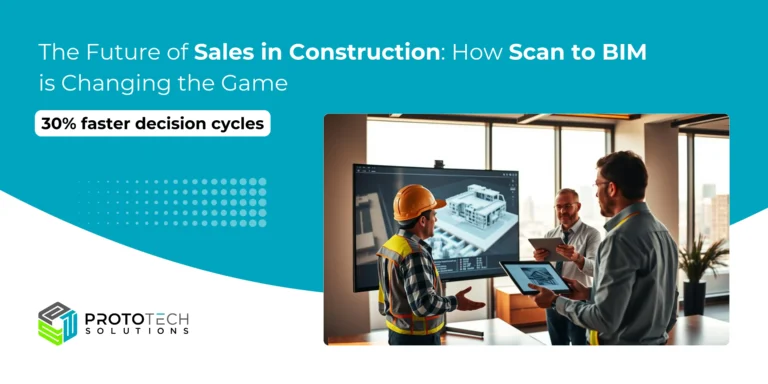Why Unity 3D is the Best Choice for Building a 3D Product Configurator

What is a 3D Product Configurator?
In today’s digital-first world, businesses across industries are leveraging 3D product configurators to enhance customer experiences and drive engagement. Whether you’re selling custom furniture, cars, or consumer electronics, an interactive 3D product configurator allows users to visualize and personalize products in real time.
A 3D product configurator is an interactive digital tool that allows users to customize products by changing colors, materials, components, and features in a real-time 3D environment. These configurators are widely used in automotive, fashion, furniture, and manufacturing industries to offer a personalized shopping experience. By providing a 360-degree view and real-time modifications, these tools help customers make informed purchasing decisions.
At ProtoTech Solutions, we have developed numerous 3D product configurators for our global customers across various industries, including e-commerce, automotive, manufacturing, furniture design, construction, and retail. We leverage advanced technologies such as Apple ARKit, APS Viewer, Babylon.js, Hoops Communicator, Three.js, Unreal Engine, WebGL, and Unity 3D.
But the question is here why ProtoTech’s developers choose Unity 3D for developing 3D product configurators? Let’s explore the details.
Among the various platforms available for creating these configurators, Unity 3D stands out as the best choice. This blog post delves into why Unity 3D is the ultimate solution for developing high-performance and immersive 3D product configurators.
Why ProtoTech Choose Unity 3D for Building a Product Configurator?
1. Real-Time Customization
Unity’s real-time engine allows instant visualization of product customizations, such as color changes or component swaps. This interactivity shortens sales cycles by helping customers finalize configurations faster. Brands like SmartPixels report higher conversion rates and increased average order values when users engage with Unity-powered configurators. Developers also benefit from rapid prototyping tools, enabling quick testing of new features without disrupting live projects.
2. Cross-Platform Compatibility
One of Unity’s biggest advantages is its ability to deploy applications across 15+ platforms, including web browsers (via WebGL), mobile devices (Android/iOS), VR headsets, and desktop systems (Windows/macOS). This universal reach allows companies like Church’s Footwear to deploy their shoe customization tool to global audiences, resulting in 50% of made-to-order sales during the pandemic through web and mobile interfaces. The platform’s Universal Render Pipeline (URP) optimizes performance for lower-end devices, while the High-Definition Render Pipeline (HDRP) delivers cinematic-quality visuals for high-performance systems
3. Industry-Leading Market Adoption
With 45% of the global game engine market share and dominance in sectors beyond gaming, Unity is a trusted platform for scalable solutions. Over 71% of top mobile games use Unity, underscoring its reliability for high-performance applications. The engine’s scripting API in C# and drag-and-drop functionality makes it accessible to developers of all skill levels, while its compatibility with macOS and Windows ensures broad team collaboration
4. User-Friendly Interface and Customization
Unity offers an intuitive interface along with powerful scripting capabilities using C#. Developers can easily implement UI/UX elements that allow customers to modify products effortlessly. From changing colors and textures to swapping different components, Unity’s flexible architecture ensures seamless customization.
5. Third-Party Integrations
Unity’s Asset Store provides a vast library of pre-built models, textures, plugins, and tools that significantly speed up development. Additionally, Unity integrates well with third-party software like Autodesk Maya, Blender, and Adobe Photoshop, making it easier to import and optimize 3D models.
6. Seamless AR and VR Integration
Unity supports emerging technologies like VR and AR, positioning configurators for long-term relevance. For example, VR configurators enable users to interact with products in virtual showrooms, enhancing B2B and B2C buyer experiences. The platform’s integration with Autodesk Maya and 3DS Max streamlines 3D asset workflows, while partnerships with Microsoft Azure and Epic Games ensure compatibility with cloud services and next-gen hardware.
7. Strong Community and Support
Unity has a massive global community of developers, artists, and designers who contribute to its continuous improvement. The availability of extensive documentation, tutorials, and forums makes it easier for teams to troubleshoot issues and learn best practices.
8. AI and Machine Learning Capabilities
Unity’s ML-Agents toolkit enables the integration of artificial intelligence and machine learning, allowing businesses to create intelligent product configurators that offer recommendations based on user preferences and behavior analysis.
How Businesses Benefit from Unity-Based 3D Product Configurators
1. Enhanced Customer Engagement and Satisfaction
An interactive 3D configurator built with Unity allows users to explore and customize products with a high level of detail, leading to increased engagement and satisfaction.
2. Reduced Return Rates
By providing a realistic visualization of products before purchase, businesses can significantly reduce product return rates due to unmet expectations.
3. Increased Sales and Conversions
Studies have shown that interactive 3D experiences lead to higher conversion rates. Unity-powered configurators provide an immersive shopping experience that drives sales.
4. Competitive Advantage
Offering a Unity-based 3D configurator sets businesses apart from competitors still relying on traditional product images and static visuals.
5. Streamlined Production and Manufacturing
Integrating a Unity 3D product configurator with backend systems allows manufacturers to receive precise customer specifications, reducing errors and production costs.
Conclusion
Unity 3D is undoubtedly the best choice for developing high-quality, interactive, and scalable 3D product configurators. With its real-time rendering capabilities, cross-platform support, extensive asset store, and AR/VR integration, Unity provides businesses with the tools they need to enhance customer experiences and drive sales. Whether you’re a small startup or an established enterprise, investing in a Unity-powered 3D configurator can help you stay ahead in the competitive digital marketplace.
Are you looking to build a custom 3D product configurator with Unity? Get in touch with our team of experts to bring your vision to life!






